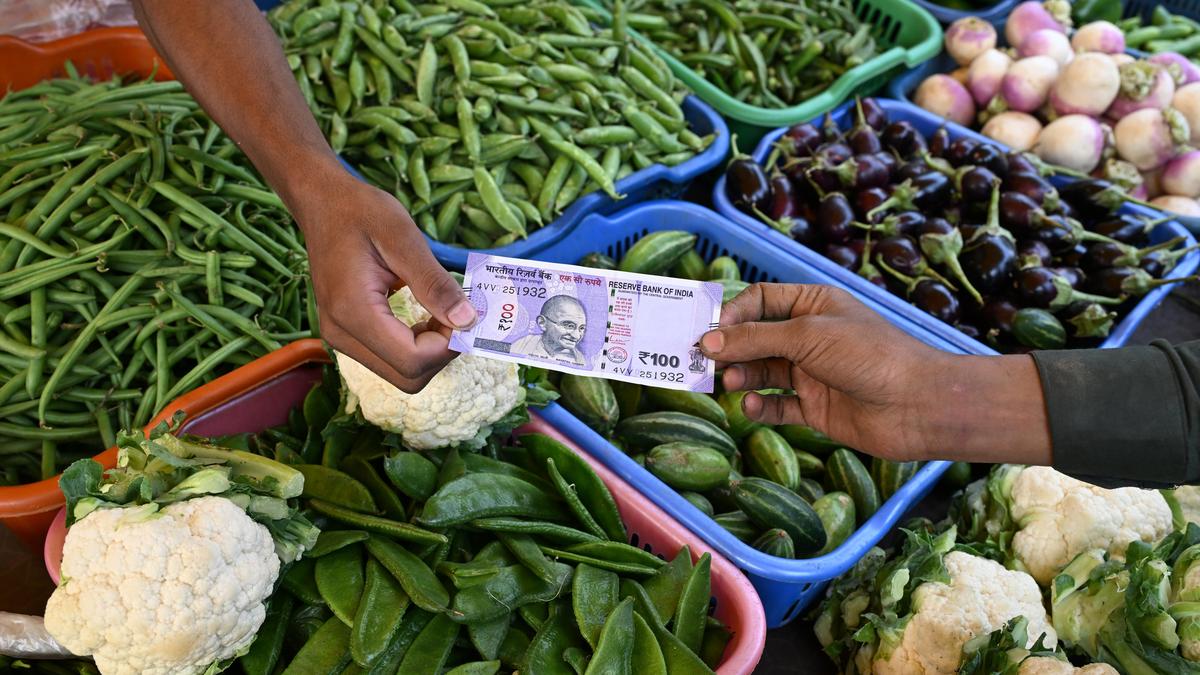14 November 2025 The Hindu Editorial
What to Read in The Hindu Editorial( Topic and Syllabus wise)
Editorial 1 : Urgent update
Context
India must urgently overhaul its Consumer Price Index.
Introduction
Retail inflation data for October highlights how urgently India needs an updated Consumer Price Index (CPI)framework. Although headline inflation appears to have dropped sharply, this decline is largely a statistical distortioncreated by base effects rather than an actual easing of prices. The mismatch between the CPI’s reported figures and people’s real-world experiences raises serious concerns about the index’s reliability and relevance.
Inflation Drop: More Statistical Illusion Than Reality
- October retail inflation fell to 25%, the lowest since 2012.
- This sharp fall appears positive but is largely a statistical anomaly, not a real decline in prices.
- The food and beverages categoryrecorded a 7% drop, the steepest in the current CPI series.
- The fall happened mainly because last year’s food inflation was extremely high (9.7%), creating a high base effect.
- Despite CPI showing negative food inflation, market vegetable prices have actually risen
How Food Weight Pulls Down Overall CPI
- Food and beverages have a 46% weightin the CPI basket.
- This heavy weight means the distorted food inflation reading dragged down the entire index.
- Other major sub-groups — fuel and light, housing, tobacco, and miscellaneous— all recorded higher inflationthan last year.
- Only clothing and footwearreflected a drop in inflation due to GST rate cuts.
Structural Problems in the Current CPI
- The CPI still uses an outdated 2012 base year, making it poorly aligned with current consumption patterns.
- Weightages no longer represent reality, often hiding trends rather than reflecting them.
- A widening disconnect exists between CPI numbers and public experience — RBI’s September survey showed people perceived inflation at 7.4%, far higher than CPI estimates.
Policy Implications and Need for an Updated CPI
- RBI’s Monetary Policy Committee relies on CPI for interest rate decisions.
- The December meeting must interpret:
- Growth data temporarily inflated by GST-related demand, and
- Inflation numbers distorted by base effects and statistical noise.
- These distortions complicate accurate monetary policymaking.
- The Ministry of Statistics plans to release a new CPI seriesby the first quarter of the next financial year — an update that is urgently needed.
Conclusion
India’s current CPI framework, weakened by its outdated base year and misaligned weightages, no longer captures real inflation dynamics. As long as monetary policy relies on an index distorted by base effects, volatile food weights, and measurement gaps, policymaking will remain challenging. Updating the CPI is essential not only for statistical accuracy, but also for economic credibility, public trust, and sound policy decisions.
Editorial 2 : Amoral embrace
Context
The U.S. appears to have let Sharaa off the hook in Syria.
Introduction
The dramatic rise of Ahmed al-Sharaa, once a jihadist commander and now Syria’s President, marks a profound geopolitical shift. His growing partnership with Washington, removal of a long-standing bounty, and rapid integration into the U.S.-led regional order highlight a remarkable transformation. Yet his troubling past, ongoing rights violations, and unchecked power consolidation raise serious concerns.
Dramatic Shift in Syria–U.S. Relations
- Ahmed al-Sharaa, formerly known as Abu Mohammed al-Golani, has undergone a dramatic evolution—from a jihadist leaderto Syria’s President and a surprising S. ally.
- Once carrying a $10 million bounty, the former chief of al-Qaeda’s Syria branchis now welcomed in Washington.
- S. President Donald Trumppublicly stated he “gets along with him” after their White House meeting.
- Following the HTS overthrow of Bashar al-Assad, the U.S. removed the reward on Sharaa and initiated sanctions exemptionsfor Syria.
- Washington is reportedly helping arrange a Syria–Israel security arrangement, while expanding its presence at a Damascus airbase.
- The overall message: Syria seeks integration into the U.S.-led regional order, and the U.S. is responding enthusiastically.
Key Shifts After Assad’s Fall
| Development | Action Taken | Implication |
| HTS captures Damascus | U.S. lifts bounty on Sharaa | Signals political acceptance |
| U.S.–Syria engagement | Sanctions relief + push to repeal 2019 penalties | Economic reintegration |
| Syria’s outreach to Israel | Talks of security pact | Regional realignment |
| U.S. presence at Damascus base | Strengthened footprint | Strategic cooperation |
Concerns Over Sharaa’s Extremist Past
- Sharaa was once Baghdadi’s nomineeto found al-Qaeda’s Syria branch, later aligning himself with al-Zawahiri.
- He distanced himself from al-Qaeda only after gaining control of Idlib, which became the base of anti-Assad groups.
- His rise accelerated after the 2024 HTS offensive, supported indirectly as the Syrian army weakened under Israeli strikes.
- Despite promising an inclusive Syria, the regime has already seen:
- Massacres of minorities(Alawites, Druze).
- Sham electionsaimed at centralising authority.
- Continued activity of transnational jihadistsunder HTS.
Contradictions in Sharaa’s Leadership
| Claim | Ground Reality |
| Inclusive governance | Minority massacres reported |
| Transition from extremism | Jihadist structures still active |
| Democratic processes | Controlled, non-competitive elections |
| Human rights improvements | Western scrutiny has decreased |
U.S. Double Standards and the Risks Ahead
- The U.S., once heavily vocal about human rights abusesunder Assad, is now largely silent regarding HTS abusesunder Sharaa.
- Rapid political rehabilitation without accountabilityrisks:
- Deepening sectarian wounds,
- Strengthening jihadist networks,
- Perpetuating regional instability.
- Without checks on Sharaa’s governance, Syria could remain vulnerable to renewed conflict.
Conclusion
While Syria’s reintegration into the regional mainstream under Sharaa offers hope for stability, overlooking his extremist legacy, continued sectarian violence, and weakening of democratic safeguards carries grave risks. Without genuine accountability and meaningful reforms, Washington’s embrace may embolden authoritarian tendencies, leaving Syria’s deep wounds unhealed and its long-term peace prospects dangerously fragile.
![]()


